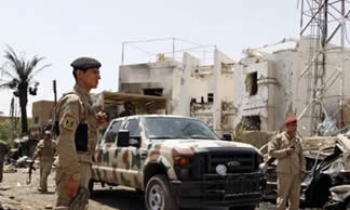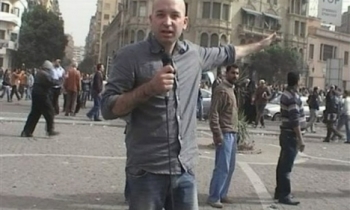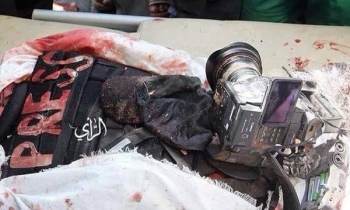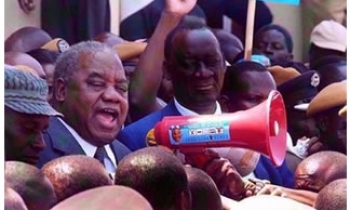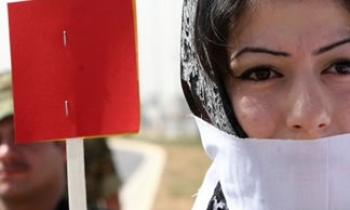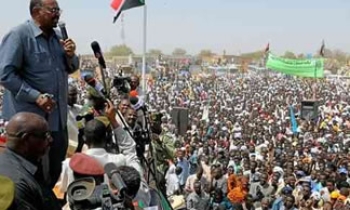Just one week before Iraqi journalists marked the 138th anniversary of the founding of Al-Zawra', the nation's first newspaper, Sahar Al-Haidari, a reporter who worked for the Voices of Iraq news agency, was shot dead on Thursday as she waited for a taxi in the northern city of Mosul. Al-Haidari, 45, a mother of four who covered political and cultural news, was the second employee from the independent news service to be killed in little more than a week.
With Al-Haidari's tragic death, the toll of Iraqi journalists killed following the 2003 US-led invasion rose to 185. According to the Paris-based Reporters Without Borders this number is more than double the number of journalists killed in the 20 years of war in Vietnam, which recorded only 63 deaths of journalists between 1955 and 1975. Furthermore, this by far surpasses the number of journalists killed in civil wars anywhere else in the world.
Journalism is said to be the profession of those who are looking for trouble, but the alarming number of journalists killed in the violence-ravaged nation, indicates that journalism in today's Iraq has become a life-threatening vocation.
With the spiralling sectarian violence, Iraq has become an increasingly dangerous place as Iraqi intellectuals, doctors, engineers, university professors and even teachers, more and more become the targets of a widespread and often ethnically-driven campaign of murder. But the large numbers of journalists and other media workers coming under fire raise serious questions as to whether they are being specifically targeted because of their profession.
Statistics show that a smaller number of Iraqi journalists were killed or injured while covering military confrontations. The majority of them were murdered in cold blood, or after they were abducted, which suggests that they were targeted for reasons related to their profession. Many of them were killed in public executions, and sometimes with family members, apparently in an attempt to intimidate other journalists into ceasing their coverage of the war.
Furthermore, the sectarian and political allegiances of the victims indicate that this is becoming an indiscriminate war that spares no group or affiliation.
The reasons for the media deaths could be based on the sectarian violence, incitement, political polarisation and attempts to stifle the press. But the problem with this theory is that neither the US forces nor the Iraqi government have bothered to conduct thorough investigations into these killings. Consequently, the perpetrators have not only managed to escape being brought to justice, but also remained at large to continue carrying out their heinous crimes.
It is not only the physical liquidation of journalists which threatens the freedom of the press in Iraq. According to the Respect of Press Freedoms Index published annually by Reporters Without Borders, Iraq came 154 last year out of a total of the 168 countries researched. Contrary to high expectations that the fall of the regime of Saddam Hussein would bring new media freedom, Iraqi journalists are now subject to an almost complete lack of freedom of expression and opinion.
Those Iraqi journalists who survive the killings, abductions and other kinds of harassment face other hurdles which limit their ability to carry out their work. While many of them are harassed by American troops and Iraqi government forces, others are threatened by political and sectarian groups because of their work. Several Iraqi journalists have been detained by the American military, on suspicion that they were helping either Sunni insurgents or Shia militias.
Government restrictions underscore that there are red lines that are not to be crossed by journalists in their reporting. The taboo topics include corruption, torture by the police and even "unfavourable" reporting on the insurgency. Many cases have been recorded in which journalists were taken to court by senior government officials and fined because they reported government corruption.
In addition to governmental pressure, dozens of Iraqi journalists have been kidnapped or killed by armed groups or militias. The Ansar Al-Islam organisation claimed responsibility for the murder of Al-Haidari in Mosul, alleging that she was an agent of the police. Furthermore, journalists in Iraq face death threats from all sides. While anti-American insurgents accuse journalists of being infidels and collaborating with the Americans, rival militias are suspicious that they might be working as spies for their opponents.
Furthermore, independent journalists have no access to accurate information and they often have to fight the tight controls imposed on the flow of the news by the US troops, Iraqi government sources, the insurgents and the militias.
Perhaps the worst thing about such repression and intimidation is that it has deprived the world of accurate and independent coverage of one of the most important news stories as most journalists are unable to leave their offices in the heavily fortified compounds in and around the Green Zone.
Reporting by foreign journalists is based to a large degree on handouts from US officials, or material gained while embedded with US military units, and is supplemented by on-the-spot accounts and interviews obtained by Iraqi "stringers", who risk their lives for a fraction of the salary paid to their Western counterparts.
In the course of this work, many Iraqi stringers have also been killed, imprisoned or subjected to violent attacks and threats. According to accounts by press watchdogs most of the real reporting in Iraq is now made by these "stringers".
Despite the substantial dangers, there are still many dedicated Iraqi journalists who continue to brave the risks in order to inform the world about the continuing tragedy in their war-torn country.

